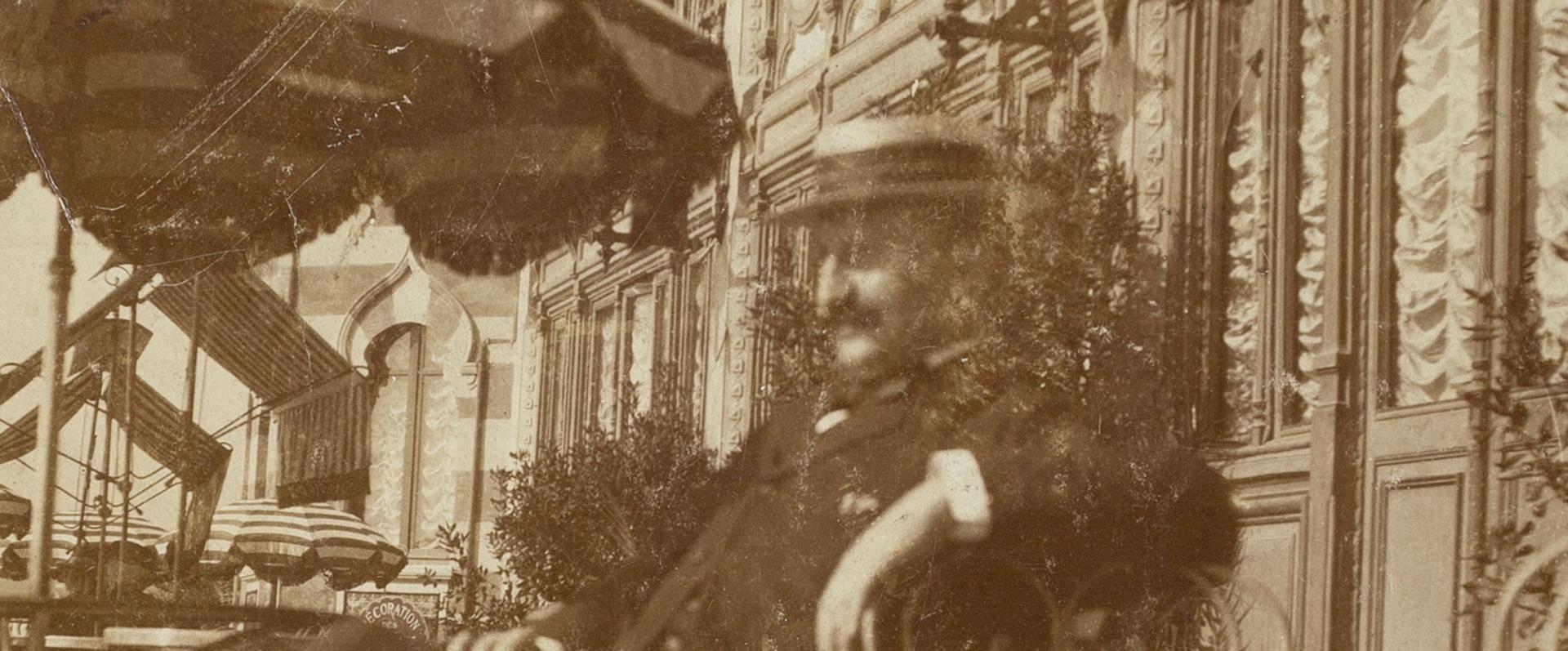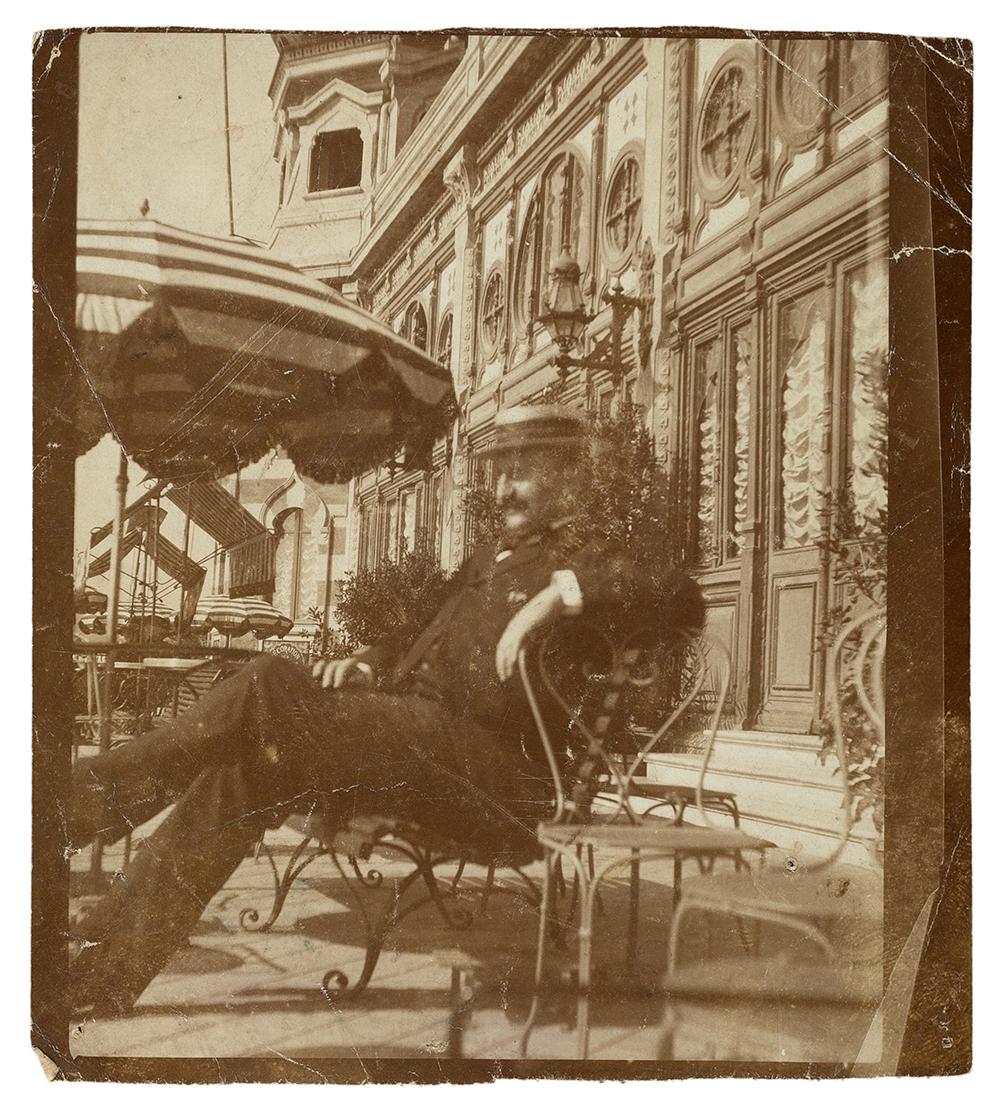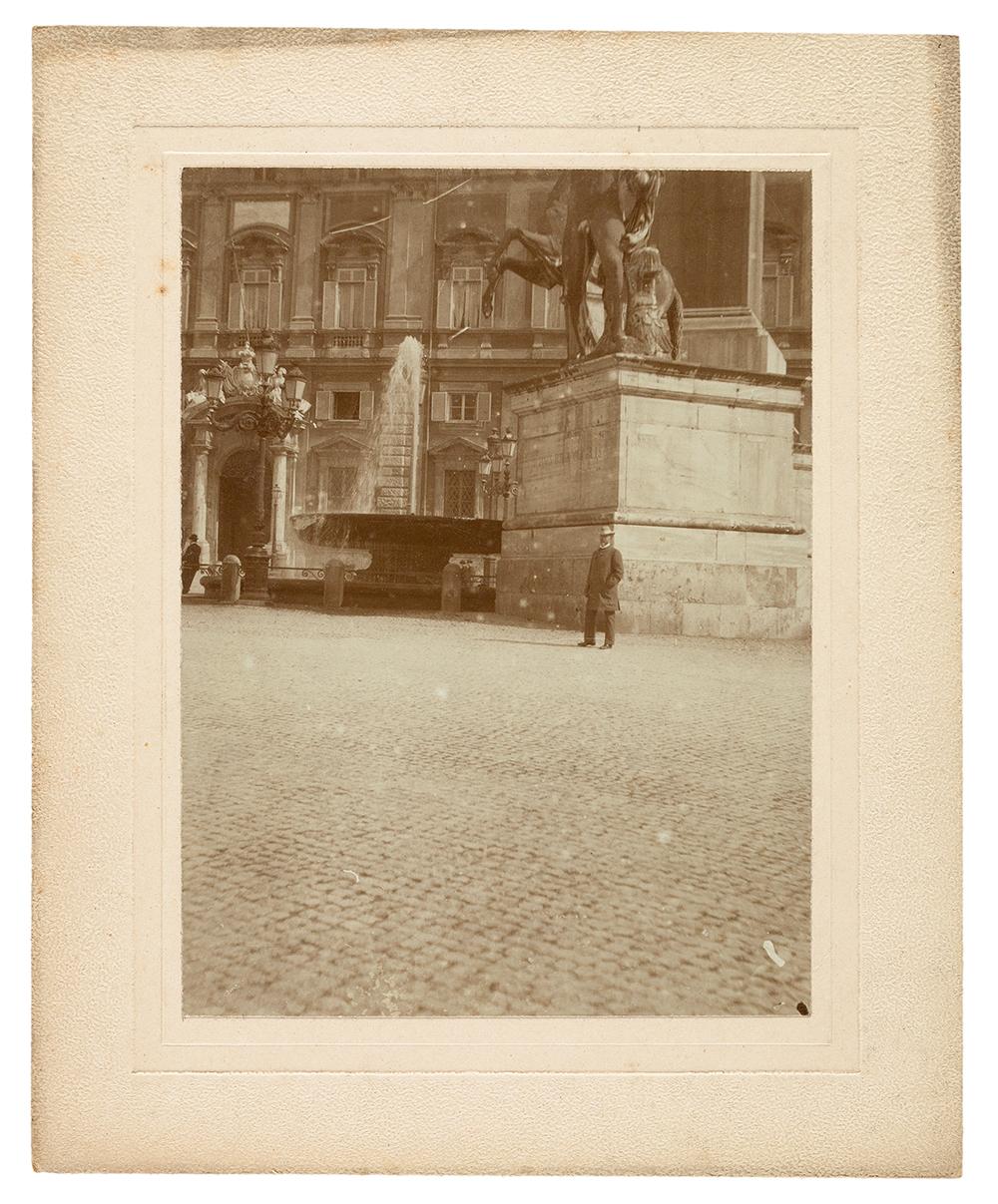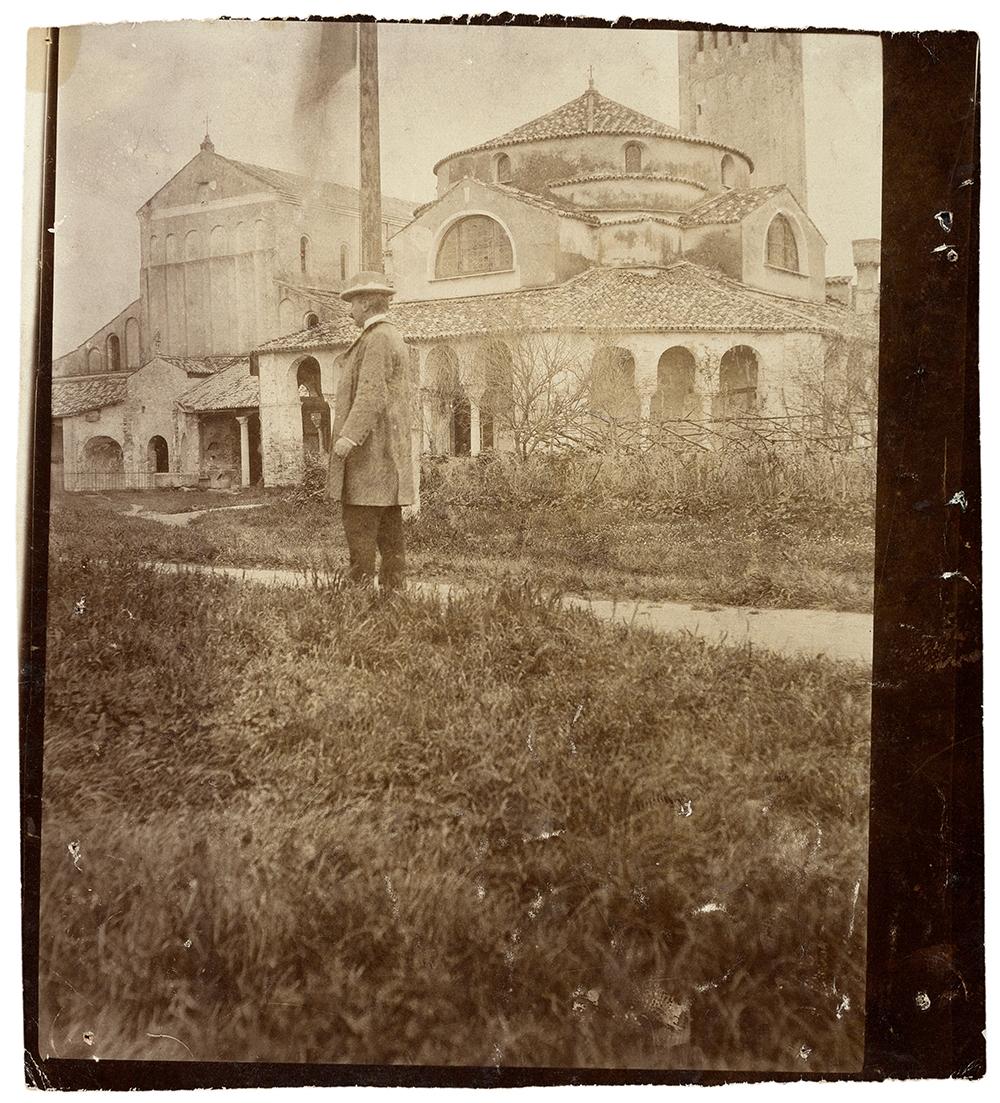Simon Maris' 1899 travel diary

Exactly 125 years ago, upstart painter Simon Maris (1873-1935) and arrived cocoa manufacturer Casparus van Houten (1844-1901) made a four-month journey together that took them to Italy via Paris and Nice. Maris took photographs along the way and kept a diary during that journey. Those photos and the notebook with his diary are part of the RKD's collection and reveal an adventurous journey.
Grand tour
In Italy, Maris and Van Houten stayed in Genoa, Florence, Venice, Rome and Naples, among other places. Along the way, they visited numerous operettas, theatre performances, churches and museums. In Paris, Maris and Van Houten admired an automobile, in Rome they caught an elect. tram, left Naples by steamboat and ascended the Rigi in a funiculiare. On their grand tour, they met French president Félix Faure the day before his unexpected death, saw Italian king Umberto I on his birthday, won a fortune at the Monte Carlo casino, saw the self-portrait commissioned by the Galleria degli Uffizi from Thérèse Schwartze in Florence, attended the Easter vigil led by Pope Leo XIII and were in Venice at the opening of the Third Biennale (where paintings by Simon's father Willem and uncle Jacob were exhibited).
Whereas Maris often limited himself in his notes to their many dejeuners, lunches, dinners and suppers, the critic J. Bories pointed out another aspect in 1914 when he described Maris's trip as ‘almost entirely study, mostly copying in museums, a time of formation that would leave its effect even after years, and was of great formative force on his colorite and colour nature’. Maris left as a landscape painter and, after seeing so many Raphaels, Renis and Della Robbias, returned as a portraitist.

Tuberculosis
Maris's travelogue records that Van Houten suffered regularly from his tuberculosis: 22 January: Mr vH not well; 23 January: Mr vH somewhat better. This disease made Van Houten prefer to stay in warm, dry regions. His task within the family business, tapping into new foreign markets, combined with his wealth, enabled him to do so. In the year that followed their trip, however, Van Houten's health deteriorated. He hoped to recover, in vain, in the thermal baths in Hammam R'hira, Algeria. There, Casparus van Houten died on 25 March 1901.

Keizersgracht 498
Van Houten left Maris a sum of money that enabled him to buy the canal house Keizersgracht 498. Maris shared this house with his friend the merchant, investor, poet and collector Hendrik Kroon (1868-1945). Maris and Kroon made that house, Maris' son Thijs later wrote, into 'a true cultural centre, the gathering place of all that was important and had a name in the arts'. For Maris, these were years of domestic happiness (marriage, two children), new travels (with Mondrian to Spain, with Kroon to Berlin), artistic recognition and business successes. ‘That he never climbed to the highest rung on the artist's ladder as a painter, despite his pronounced talent, may well be due to the fact that his qualities as a sociable person, his desire to enjoy life to the full, took up much of his time, so that the development and deepening of his artistic talents did not come into their own’, artist Hendrik Jan Wolter said in 1935.

Travel diary
It was heirlooms from Maris' friend and roommate Hendrik Kroon that put Peter van der Gulden (great-grandchild of a sister of Kroon) on the trail of Maris and Van Houten's grand tour and the handwritten travelogue Maris left behind. Van der Gulden deciphered Maris' difficult-to-read handwriting and provided his transcription with explanatory notes. All this can be read and seen at www.maris-en-van-houten.nl.
